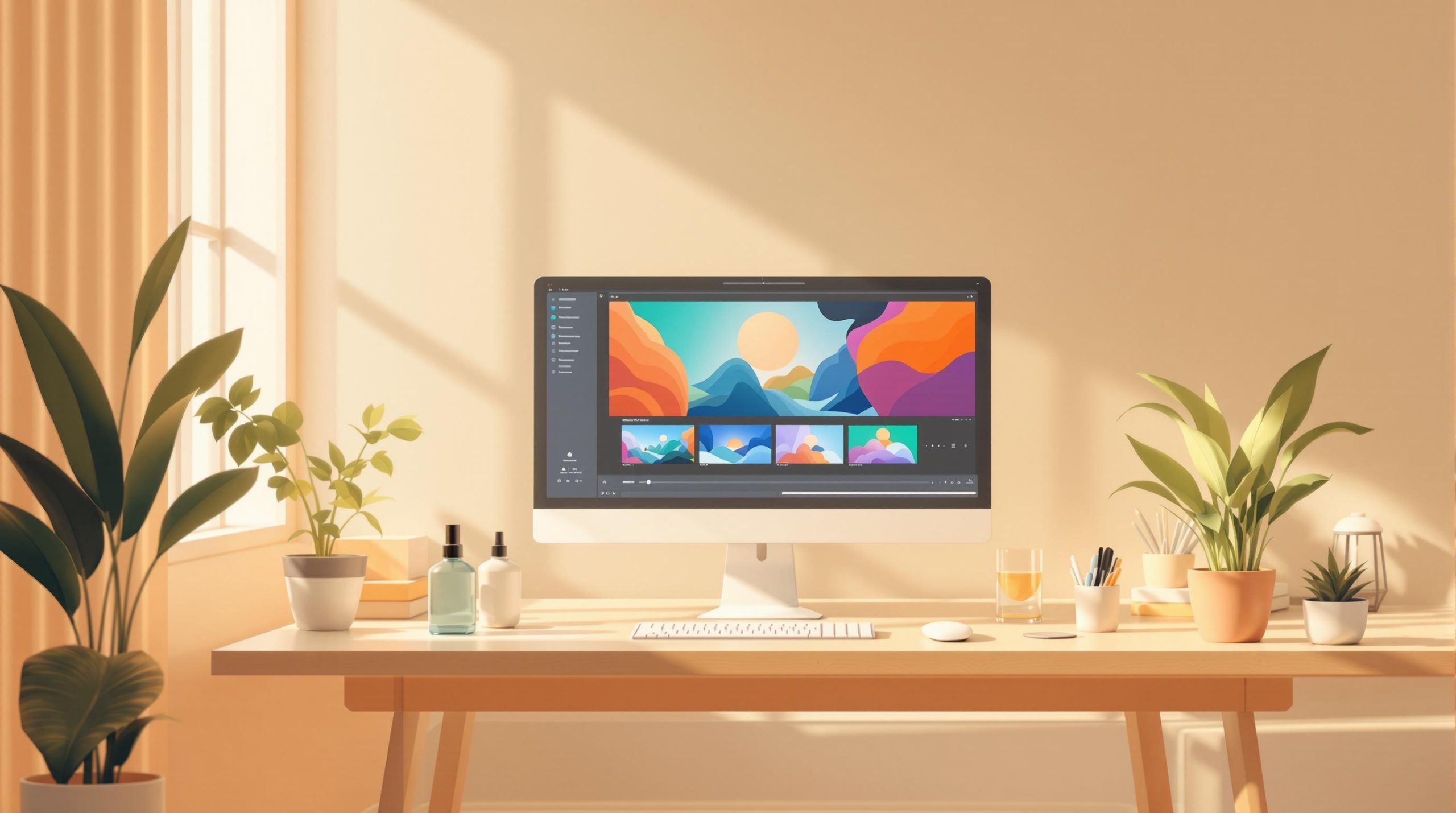Generative video models struggle with motion coherence and realistic movement. VideoJAM solves this by integrating motion and visual data into a single system, ensuring smoother transitions and lifelike motion across frames. Its Inner-Guidance mechanism dynamically refines motion during video generation, making videos look natural and consistent.
Key Benefits of VideoJAM:

- Unified Motion-Visual Processing: Combines motion and visuals seamlessly for better results.
- Dynamic Motion Guidance: Ensures smooth transitions and realistic movement.
- Easy Integration: Requires only two additional linear layers to enhance existing models.
| Feature | Traditional Models | VideoJAM |
|---|---|---|
| Motion Processing | Static or pre-defined | Dynamic Inner-Guidance system |
| Integration Effort | Complex retraining needed | Minimal changes required |
| Output Consistency | Frame misalignment, distortions | Smooth, physics-aware motion |
VideoJAM is practical for industries like film, education, and advertising, offering improved video quality without overhauling workflows. Future updates aim to handle complex motion and add features like real-time object tracking.
VideoJAM: Joint Appearance-Motion Representations for Enhanced Motion Generation
Current Problems in Video Generation
AI-driven video generation has made progress, but it still struggles with some major challenges. Two of the most pressing issues are motion coherence and output quality, which affect both the realism and usability of the generated content.
Motion and Physics Issues
One of the biggest hurdles is maintaining realistic motion. Many generative video models focus heavily on making individual frames look good, but they often neglect how those frames flow together. This results in videos that may look great in stills but feel disjointed and unnatural when played.
"While focusing on appearance fidelity can result in visually appealing individual frames, it often leads to a lack of coherence between frames, making the video as a whole look less realistic and less engaging" [4][6].
Common problems include distorted frames, physics-defying movements, and objects that appear warped or inconsistent across frames. These flaws break the illusion of realism, especially in applications like gaming, where smooth and believable motion is crucial for an immersive experience [2][6].
On top of this, these motion-related issues are often paired with visual quality problems, making it even harder for generative models to produce reliable results.
Output Quality Problems
Generative video models also face challenges with visual quality. Issues like low resolution, blurry frames, and visual artifacts are common, making AI-generated videos less effective for industries such as education, gaming, and advertising [2][4].
Traditional methods that optimize videos frame by frame tend to focus on making each frame look good but fail to maintain consistency across the entire video. Attempts to fix this, like using external tools or retraining models, are often expensive and complicated [4][2].
What’s needed is a model that can balance both motion coherence and visual quality – a gap that solutions like VideoJAM aim to address.
VideoJAM’s Core Improvements
VideoJAM raises the bar for generative video models by seamlessly combining high-quality visuals with realistic motion. Its architecture redefines how motion and visual details interact during video creation.
Unified Motion and Visual Processing
What sets VideoJAM apart is its integrated approach to handling visuals and movement. By embedding both into a single latent representation, it tackles issues like frame misalignment and object distortion head-on, ensuring smooth, physics-aware motion across frames [3][2].
This method balances visual clarity and motion consistency. Unlike older techniques that often compromise one for the other, VideoJAM processes both simultaneously, delivering videos that look sharp and flow naturally.
Advanced Training and Motion Guidance
The Inner-Guidance mechanism is a standout feature. It adjusts motion predictions dynamically during video generation, ensuring smooth transitions and consistent movement. This allows the model to:
- Use its evolving motion predictions to guide video creation
- Maintain a steady flow of motion throughout the video
"The Inner-Guidance mechanism allows the model to utilize its own evolving motion predictions to guide video generation, leading to smoother and more natural transitions between frames, and improving the temporal consistency and realism of generated videos" [3][2][4].
VideoJAM’s training approach directly incorporates motion into its core process. By unifying motion and visual data, it simplifies integration into existing systems without requiring extensive retraining or complicated data tweaks [3][2].
| Feature | Traditional Models | VideoJAM |
|---|---|---|
| Integration Approach | Separate motion and visual processing, extensive retraining | Unified motion-visual processing, minimal changes |
| Motion Guidance | Static or pre-defined | Dynamic Inner-Guidance system |
| Implementation Complexity | Complex integration | Two additional linear layers |
These advancements make VideoJAM a practical and effective solution for enhancing video quality while remaining easy to incorporate into existing workflows.
sbb-itb-5392f3d
Adding VideoJAM to Current Systems
VideoJAM is designed to integrate smoothly into existing platforms, offering developers a practical way to enhance their systems.
System Requirements
Integrating VideoJAM requires minimal adjustments, as shown below:
| Component | Specification | Purpose |
|---|---|---|
| Architecture Changes | Two linear layers | Processes motion and visuals |
| Model Compatibility | Pre-trained video models | Fits with current frameworks |
With these simple requirements, adding VideoJAM to your workflow is straightforward.
Implementation Steps
- Training Integration: Incorporate video inputs and motion data into a shared latent space using the new linear layers. This process ensures smooth blending of motion and visuals across frames [2][3].
- Inner-Guidance Setup: Set up the Inner-Guidance mechanism to dynamically refine motion representation during video generation. This step helps create natural movements and smooth transitions [2].
- Final Configuration: Initialize the two linear layers and integrate them into your existing model. This step enhances motion processing without affecting the original model’s core functions [2][3].
VideoJAM works well with various pre-trained video models, making it a reliable choice for improving video generation quality [2][3].
Results and Performance
VideoJAM shows clear advancements in both motion consistency and visual quality when compared to other video generation models.
Movement Quality Results
By tackling issues like motion artifacts and visual inconsistencies, VideoJAM addresses challenges that traditional generative models often struggle with. This results in a noticeable reduction in motion artifacts [4][3].
Here’s how VideoJAM stacks up against other models:
| Aspect | Improvement | Impact |
|---|---|---|
| Visual Artifacts | Fewer distortions and deformations | Objects appear stable and natural |
| Motion Coherence | Higher scores vs Sora/Kling | Frame transitions are much smoother |
"VideoJAM provides a structured approach to improving motion coherence in AI-generated videos by integrating motion as a key component rather than an afterthought." – Hila Chefer, VideoJAM Researcher [5]
Visual Output Results
The framework excels in combining appearance and motion processing to deliver superior results:
- Integrated Processing: Real-time adjustments ensure consistent visuals and natural motion across frames.
- Balanced Performance: Maintains high-quality appearance while keeping motion realistic.
VideoJAM has set new benchmarks in motion coherence, outperforming proprietary models in both automated tests and human evaluations [4][6].
Its use of optical flow representation, which tracks motion patterns between frames, plays a vital role in maintaining visual consistency across generated video. This method works seamlessly with RGB video outputs, offering a reliable and adaptable solution for motion handling [4].
These advancements make VideoJAM a powerful tool for industries that depend on producing high-quality videos.
Uses and Future Development
Industry Applications
VideoJAM’s ability to improve motion coherence and visual quality makes it a valuable tool for industries such as film, education, advertising, and data annotation. It enables more realistic special effects, stable learning materials, and engaging video content. Its lightweight design allows for easy integration across different sectors.
| Industry Sector | Primary Application | Key Benefit |
|---|---|---|
| Film & Entertainment | Special Effects Generation | More lifelike motion |
| Education | Interactive Learning Content | Consistent visual quality |
| Advertising | Dynamic Video Content | Higher audience engagement |
| Data Annotation | Training Dataset Creation | Faster labeling process |
In data annotation, VideoJAM is particularly useful. Its ability to produce videos with consistent motion speeds up labeling tasks, which is critical for industries working on autonomous vehicles and robotics solutions [8].
As more industries adopt VideoJAM, updates and improvements will continue to expand its capabilities.
Next Steps in Development
Future updates will focus on tackling more complex motion scenarios and enhancing VideoJAM’s functionality. Planned improvements to the Inner-Guidance mechanism aim to handle challenges like multiple objects moving simultaneously [1].
Some of the upcoming developments include:
- Adding real-time object segmentation using SAM 2 [8]
- Introducing 3D reconstruction features inspired by TRACKSTO4D [7]
- Building multimedia generation models that include audio elements [1]
The development team remains committed to refining the tool’s ability to handle intricate motion patterns while ensuring it stays efficient and accessible for developers across a wide range of industries. These efforts aim to deliver high-quality results without compromising usability.
Conclusion
VideoJAM tackles two key hurdles in generative video models: maintaining smooth motion and ensuring high visual quality. It achieves this with its joint appearance-motion representation and Inner-Guidance mechanism – boosting performance without requiring major model changes or additional training data [3][4].
With its user-friendly design, VideoJAM is accessible to developers across various industries. Its optical flow-based motion representation enables efficient processing and compatibility with a range of applications [4]. This makes it easier for organizations to improve their video generation capabilities without overhauling their current workflows.
Future plans for VideoJAM include advancements like real-time processing and multi-object tracking, which align with the increasing need for more advanced video generation tools. By addressing core challenges in motion and visual quality, VideoJAM raises the bar for generative video models, opening doors to more realistic and impactful AI-driven content.

